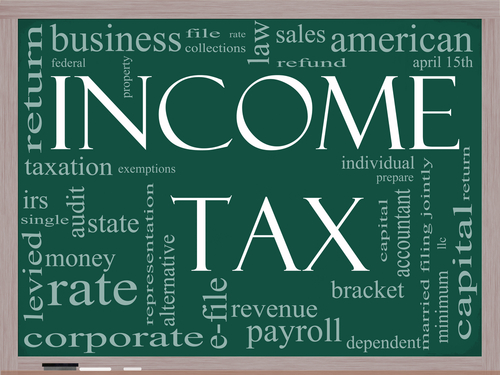A marginal tax rate is the tax rate that applies to the last unit of currency of your taxable income or your taxable spending. Essentially, the marginal tax rate is the rate that you pay on the “last dollar” in your income. Thus, the marginal tax rate changes one’s required taxes. As your income rises, you will frequently have to pay more on your income taxes. However, your overall taxes do not only depend on your income—it also depends on your filing status, and this might affect the amount you pay within a marginal tax rate bracket.
Marginal Tax Rates in the United States
Throughout history, the marginal tax rate has differed significantly. Following World War II, the highest rate has ranged from less than 30 percent to greater than 90 percent. The less than 30 percent marginal tax rate was the rate at the end of Regan’s presidency, and the greater than 90 percent marginal tax rate was the rate throughout the Eisenhower years. However, when the marginal tax rate was 90 percent, there were many loopholes so essentially no one actually paid that much.
In 1964, the Kennedy-Johnson tax cut reduced the marginal tax rate. However, the inflation that followed in the next fifteen years resulted in a huge increase in the marginal tax rate that was later adjusted by Regan.
Marginal Tax Rates Today
Currently, there are seven tax brackets for income, and there are four classifications for your filing status. The tax brackets begin at $0-$8,925, and end at income that is more than $400,000. The four classifications are: single, married and filing separately, married and filing jointly (or if you are a widow or widower), and the head of the household.
To determine your marginal tax rate, first, determine which tax bracket that you fall into. You will need to know your income in order to know what your tax bracket is. When you determine the tax bracket that you fall into, you can see the marginal tax rate for that bracket. For example, the marginal tax rate for the lowest bracket is 10% but the marginal tax rate for the highest bracket is 39.6%.
Next, determine what your classification status is—for example, are you married? As an individual, you pay the marginal tax rate for each dollar that is within your bracket. If you earn $15,000 dollars, this means that your first $8,700 dollars is taxed at ten percent, and the remaining money is taxed at the rate of the next bracket (in the United States, the next bracket is 15%). Your classification status can frequently work as additional deductions to your taxes unless both you and your spouse have similar incomes, and especially high incomes in which case you pay a very significant marriage penalty.
Tax Brackets to Determine Your Marginal Tax Rate
The tax brackets as of 2013 to determine your marginal tax rate as follows:
Singles
- 10% on taxable income from $0 to $8,925, plus
- 15% on taxable income over $8,925 to $36,250, plus
- 25% on taxable income over $36,250 to $87,850, plus
- 28% on taxable income over $87,850 to $183,250, plus
- 33% on taxable income over $183,250 to $398,350, plus
- 35% on taxable income over $398,350 to $400,000, plus
- 39.6% on taxable income over $400,000.
Married filing jointly:
- 10% on taxable income from $0 to $17,850, plus
- 15% on taxable income over $17,850 to $72,500, plus
- 25% on taxable income over $72,500 to $146,400, plus
- 28% on taxable income over $146,400 to $223,050, plus
- 33% on taxable income over $223,050 to $398,350, plus
- 35% on taxable income over $398,350 to $450,000, plus
- 39.6% on taxable income over $450,000.
Married filing separately:
- 10% on taxable income from $0 to $8,925, plus
- 15% on taxable income over $8,925 to $36,250, plus
- 25% on taxable income over $36,250 to $73,200, plus
- 28% on taxable income over $73,200 to $111,525, plus
- 33% on taxable income over $111,525 to $199,175, plus
- 35% on taxable income over $199,175 to $225,000, plus
- 39.6% on taxable income over $225,000.
Head-of-Household:
- 10% on taxable income from $0 to $12,750, plus
- 15% on taxable income over $12,750 to $48,600, plus
- 25% on taxable income over $48,600 to $125,450, plus
- 28% on taxable income over $125,450 to $203,150, plus
- 33% on taxable income over $203,150 to $398,350, plus
- 35% on taxable income over $398,350 to $425,000, plus
- 39.6% on taxable income over $425,000.
As you can see, higher income married couples will have a much higher marginal tax rate than they would if each was single and they were not pushed into the highest tax bracket.







